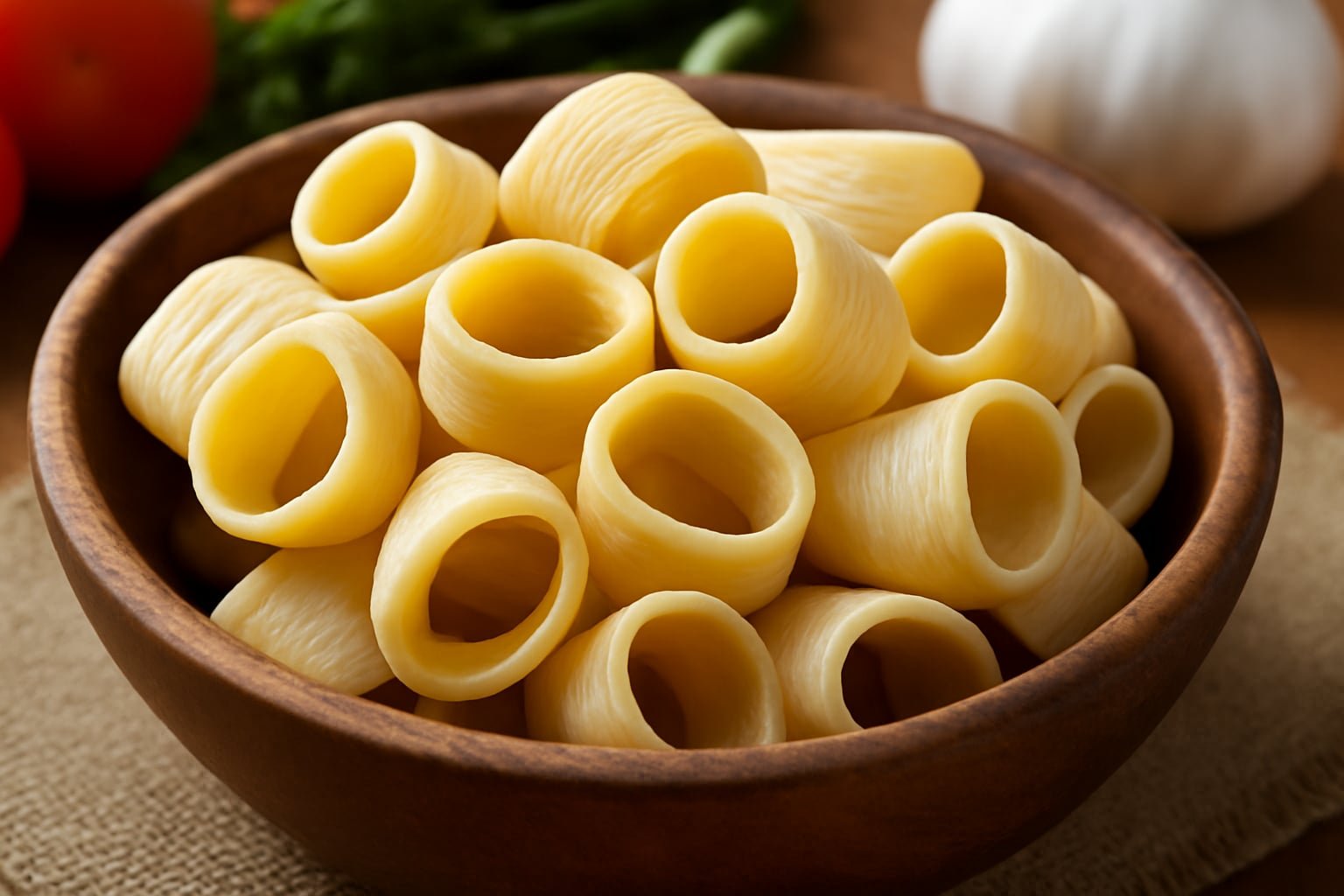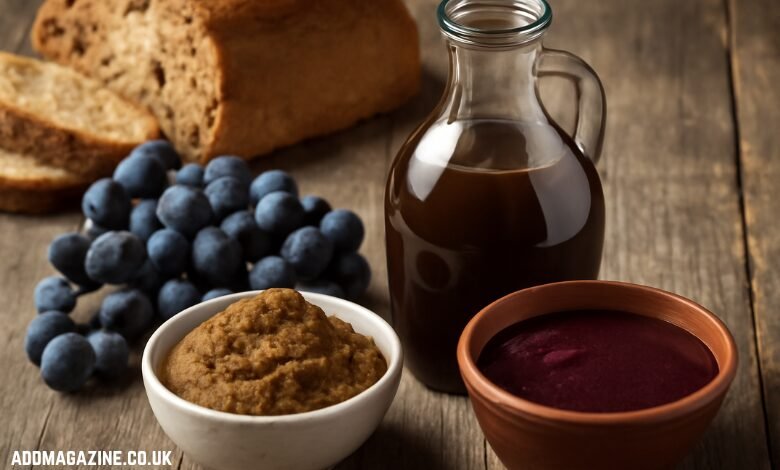When it comes to Italian cuisine, pasta takes center stage. From the delicate strands of spaghetti to the intricate shapes of orecchiette, each pasta variety has its own origin story and cultural significance. Among these varieties, calamariere stands out as a pasta with both an intriguing shape and a deep connection to Italy’s coastal regions. But what exactly is calamariere, and why has it maintained its relevance in Italian kitchens for centuries? In this post, we’ll explore the origins, the history, the unique shape, and how calamariere is used in contemporary dishes.
What Is Calamariere?
Calamariere is a type of pasta from Southern Italy, often associated with the region of Calabria. The name calamariere is derived from the Italian word calamari, which means squid. This is because the pasta shape is said to resemble the body of a squid, with its long, tubular form and slight curl. In its traditional form, calamariere is slightly thicker than other tubular pastas, and the ridged texture helps it hold onto sauces effectively.
The pasta’s distinctive form is ideal for pairing with a variety of sauces, particularly those that include seafood or rich tomato-based ingredients. The traditional preparation of calamariere reflects the Italian coastal regions’ love for seafood and fresh, simple ingredients. It is often served with a seafood medley, such as squid, clams, or shrimp, making the connection to its namesake even more evident.
The Origin of Calamariere: A Historical Perspective
The history of calamariere is rooted in the culinary traditions of Southern Italy. While specific records about the exact date of its creation are scarce, it is widely believed that the pasta emerged around the 17th or 18th century. This period marked a significant development in Italian regional cuisine, especially in coastal areas like Calabria, Sicily, and Campania. The love for seafood, which has always been a cornerstone of Mediterranean diets, heavily influenced the creation of pasta shapes that would complement seafood-based dishes.
Southern Italy, particularly the Calabrian region, has a long history of using seafood as a primary ingredient in local recipes. As pasta production became more refined over the centuries, various shapes began to emerge in these regions, each one designed to pair well with different types of sauces and ingredients. The calamariere was one such creation, likely designed to hold sauces that included seafood or fish, ensuring that the sauce was not only flavorful but also absorbed into the pasta.
While the exact inventor of calamariere is unknown, the pasta is a part of Italy’s broader history of using fresh, local ingredients and creating distinctive regional pasta shapes. The use of squid or calamari in the name of the pasta emphasizes the strong connection between the coastal regions of Italy and their maritime traditions.
Why Is Calamariere Unique?
One of the primary characteristics that makes calamariere unique is its shape. The pasta has a tubular form, similar to other popular varieties like penne or ziti, but it is often slightly wider and longer, resembling the body of a squid. This shape allows the pasta to hold a considerable amount of sauce, making it a great choice for rich, hearty dishes. The ridged texture of the pasta further enhances its ability to trap sauces, particularly thicker ones like tomato or cream-based sauces.
Moreover, calamariere is often hand-rolled or crafted using traditional methods, which gives it a slightly irregular and rustic appearance. This handmade quality is part of the charm of many regional Italian pastas, and calamariere is no exception. The irregularities in the shape help to create a more textured surface, allowing for a better sauce adhesion.
Another important feature of calamariere is its versatility. While it is traditionally served with seafood, it can also be paired with a wide range of other ingredients, from vegetables to meats. This flexibility has helped the pasta maintain its place in Italian cooking, even as new pasta shapes continue to emerge in modern kitchens.
Regional Connections: Calabria and Beyond
While calamariere is most commonly associated with Calabria, the pasta is not limited to this region alone. Calabria is located in the southern part of Italy, along the coast, and its culinary traditions are deeply influenced by the Mediterranean Sea. As a result, seafood plays a significant role in Calabrian cuisine, and pasta shapes like calamariere are perfectly suited for seafood-based sauces.
In Calabria, calamariere is often prepared with a variety of fresh seafood, such as squid, shrimp, and shellfish. The combination of the pasta’s shape and the region’s bounty of fresh fish creates dishes that are both hearty and flavorful. In addition to seafood, the pasta may also be served with meat or vegetable-based sauces, depending on the season and available ingredients.
While calamariere is most commonly found in Southern Italy, its influence has spread to other parts of the country, especially with the rise of interest in regional Italian cooking. Many Italian restaurants, both in Italy and abroad, feature calamariere as part of their menu, often with variations based on local ingredients and preferences.
The Revival of Traditional Italian Pastas
In recent years, there has been a renewed interest in traditional Italian pasta shapes like calamariere. This resurgence is part of a larger trend in the culinary world, where chefs and home cooks alike are rediscovering the value of traditional, handmade pasta. The desire for authentic, regional recipes has led to a greater appreciation for pasta varieties that were once overlooked in favor of more mainstream shapes like spaghetti and penne.
The revival of calamariere is a testament to the importance of preserving regional Italian food traditions. As more people seek out the authentic flavors of Italy’s lesser-known regions, pasta shapes like calamariere are gaining recognition for their unique qualities and ability to enhance the dining experience. By using calamariere in contemporary dishes, chefs are honoring the past while adding their own modern twist to these traditional recipes.
How to Prepare and Serve Calamariere
Calamariere is typically boiled in salted water, just like other types of pasta. Due to its size and texture, it often takes a little longer to cook than more traditional pasta shapes, so it’s important to keep an eye on the cooking time. Once cooked, it can be paired with a variety of sauces, though it is most commonly served with seafood-based sauces.
A classic calamariere dish might feature a medley of fresh seafood, such as squid, shrimp, and clams, cooked in a garlic-infused olive oil and white wine sauce. A touch of red pepper flakes can add a bit of heat, which complements the sweetness of the seafood. The dish might also include a handful of fresh herbs, such as parsley or basil, to add brightness and depth of flavor.
For those who prefer a vegetarian or meat-based version, calamariere can also be paired with tomato-based sauces, creamy Alfredo-style sauces, or even simple vegetable mixtures like roasted peppers and zucchini. Its sturdy shape and texture make it suitable for a variety of different pairings, which is why it has remained a beloved pasta choice for so long.
Conclusion
Calamariere is a pasta shape that has deep roots in the culinary traditions of Southern Italy, particularly Calabria. Its name, derived from the word calamari, reflects the connection to the region’s love for seafood, and its unique shape allows it to hold sauces in a way that enhances the overall flavor of the dish. While the exact date of its creation remains uncertain, its ties to Italy’s maritime history and its continued popularity in both traditional and modern Italian cooking underscore its importance in Italian cuisine.
In recent years, calamariere has experienced a resurgence as chefs and home cooks rediscover the pleasures of traditional pasta shapes. Its versatility, texture, and rich cultural history make it a worthy addition to any pasta lover’s repertoire. Whether served with seafood, meat, or vegetables, calamariere remains a testament to the enduring appeal of Italian culinary traditions and the timeless connection between food and culture.




